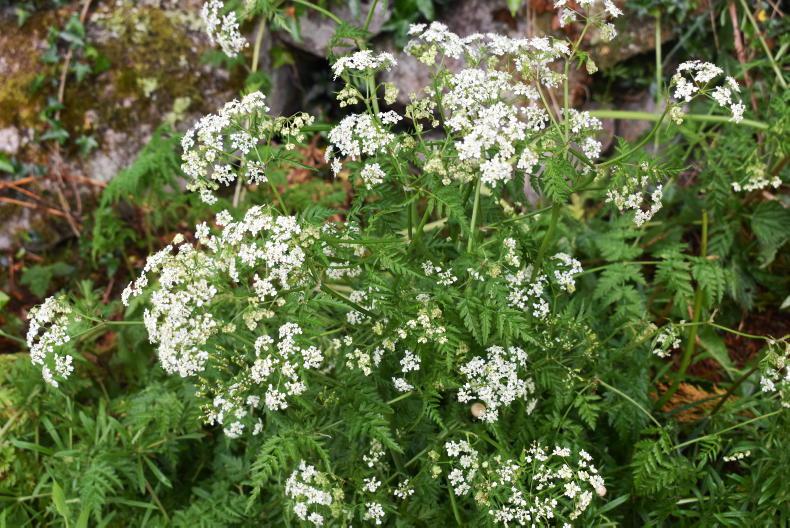Do you feed silage contractors?
A Tipperary reader has written to us expressing her frustration, and the frustration of other women, at having to feed silage contractors in 2022. We want your input to this debate.
Dear Editor
Well it’s that time of the year again. Silage cutting and all that goes with it.
I am a stay-at-home farmer’s wife and have been feeding silage men for over 25 years. I recently did a mini-survey of people in similar positions in my area.
Out of 12 women of mixed ages, about 32 to over 70, there was a unanimous vote against.
So wake up contractors and let these men bring food with them (as all tradesmen and other workers do) or you feed them yourself.
After all, there is no discount for us farmers when it comes to paying the bill. I’m hoping it will be possible for you at Irish Country Living to do an all-Ireland survey?
Living in hope.
Tipperary reader (name with editor)
We would appreciate if you could participate in a survey on feeding silage contractors at www.ifj.ie/feedingcontractors. Alternatively, please e-mail the editor Amii with the answer to these two questions and any comments you may have: amckeever@farmersjournal.ie. We would also like to hear from contractors on this matter.
1. Do you feed farm contractors? Y / N
2. Is there any incentive to feed contractors Y/N
3. Any comments
Growing wild with with Dr Catherine Keena, Teagasc countryside management specialist

Growing wild: Cow parsley
Look out for cow parsley, a tall conspicuous plant on many roadside verges. It is an “umbel”, a cluster of flowers on stalks coming from the same point.
Its lace-like delicate white flowers reach out of feathery fern-like leaves, which account for its name Queen Anne’s lace. It was also called lady’s lace and used to decorate May altars to honour Our Lady.
It has a distinctive scent on warm days. Cow parsley provides an abundant supply of nectar for flies, bees, beetles and wasps. This iconic plant of country roadsides is part of our native Irish biodiversity.
Do you have a new cast iron pan? Is everything sticking to it? You need to season your pan.
This is on my mind because my father arrived from Canada this week and the first thing he did was season my pan.
You never need to throw away a good-quality cast iron pan; it should last a lifetime. If you have an old, rusty pan you can restore it, season it and it should be like new again.
1. Protective film
You do this by applying a thin layer of fat and heating the pan until the oil forms a protective film.
2. Season
To season, wash and dry your pan, then rub any cooking oil into the pan with kitchen towel. Rub it in really well. The pan should look shiny but not overly greasy.
3. Heat
Place the pan in a 200°C preheated oven (or if you’re like my dad, you can place it on the barbecue) and leave it there for around 30 minutes.
Top tip
For best results, repeat this process three to four times - take it out, rub in the oil and place it back in the oven for another 30 minutes.
Make sure you have good ventilation as it might get smoky, but the end result will be an absolute joy to cook with.
From folklorist Shane Lehane reminisces about “a day in the bog”
Here is where the back-breaking work of turning and footing would take place over the following weeks. The only thing that might interrupt such hard work was the relentless attack of small flies or the very real threat of thunder and lightning
11,000 - Number of people, mostly parents, who call the National Poisons Information Centre (NPIC) every year. See health P14
Do you feed silage contractors?
A Tipperary reader has written to us expressing her frustration, and the frustration of other women, at having to feed silage contractors in 2022. We want your input to this debate.
Dear Editor
Well it’s that time of the year again. Silage cutting and all that goes with it.
I am a stay-at-home farmer’s wife and have been feeding silage men for over 25 years. I recently did a mini-survey of people in similar positions in my area.
Out of 12 women of mixed ages, about 32 to over 70, there was a unanimous vote against.
So wake up contractors and let these men bring food with them (as all tradesmen and other workers do) or you feed them yourself.
After all, there is no discount for us farmers when it comes to paying the bill. I’m hoping it will be possible for you at Irish Country Living to do an all-Ireland survey?
Living in hope.
Tipperary reader (name with editor)
We would appreciate if you could participate in a survey on feeding silage contractors at www.ifj.ie/feedingcontractors. Alternatively, please e-mail the editor Amii with the answer to these two questions and any comments you may have: amckeever@farmersjournal.ie. We would also like to hear from contractors on this matter.
1. Do you feed farm contractors? Y / N
2. Is there any incentive to feed contractors Y/N
3. Any comments
Growing wild with with Dr Catherine Keena, Teagasc countryside management specialist

Growing wild: Cow parsley
Look out for cow parsley, a tall conspicuous plant on many roadside verges. It is an “umbel”, a cluster of flowers on stalks coming from the same point.
Its lace-like delicate white flowers reach out of feathery fern-like leaves, which account for its name Queen Anne’s lace. It was also called lady’s lace and used to decorate May altars to honour Our Lady.
It has a distinctive scent on warm days. Cow parsley provides an abundant supply of nectar for flies, bees, beetles and wasps. This iconic plant of country roadsides is part of our native Irish biodiversity.
Do you have a new cast iron pan? Is everything sticking to it? You need to season your pan.
This is on my mind because my father arrived from Canada this week and the first thing he did was season my pan.
You never need to throw away a good-quality cast iron pan; it should last a lifetime. If you have an old, rusty pan you can restore it, season it and it should be like new again.
1. Protective film
You do this by applying a thin layer of fat and heating the pan until the oil forms a protective film.
2. Season
To season, wash and dry your pan, then rub any cooking oil into the pan with kitchen towel. Rub it in really well. The pan should look shiny but not overly greasy.
3. Heat
Place the pan in a 200°C preheated oven (or if you’re like my dad, you can place it on the barbecue) and leave it there for around 30 minutes.
Top tip
For best results, repeat this process three to four times - take it out, rub in the oil and place it back in the oven for another 30 minutes.
Make sure you have good ventilation as it might get smoky, but the end result will be an absolute joy to cook with.
From folklorist Shane Lehane reminisces about “a day in the bog”
Here is where the back-breaking work of turning and footing would take place over the following weeks. The only thing that might interrupt such hard work was the relentless attack of small flies or the very real threat of thunder and lightning
11,000 - Number of people, mostly parents, who call the National Poisons Information Centre (NPIC) every year. See health P14










SHARING OPTIONS